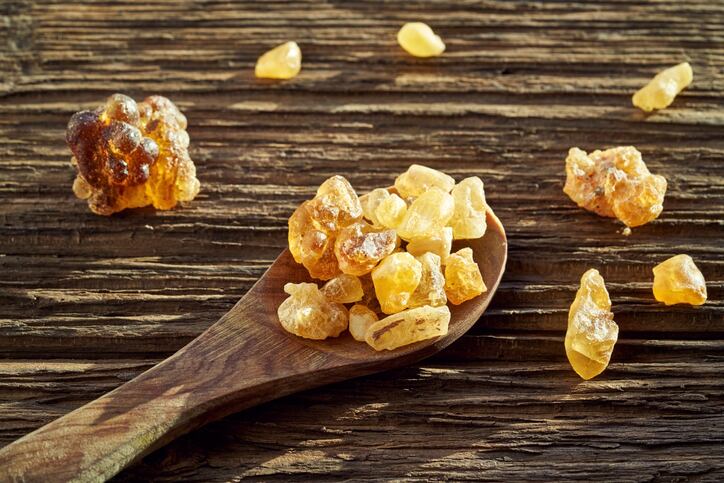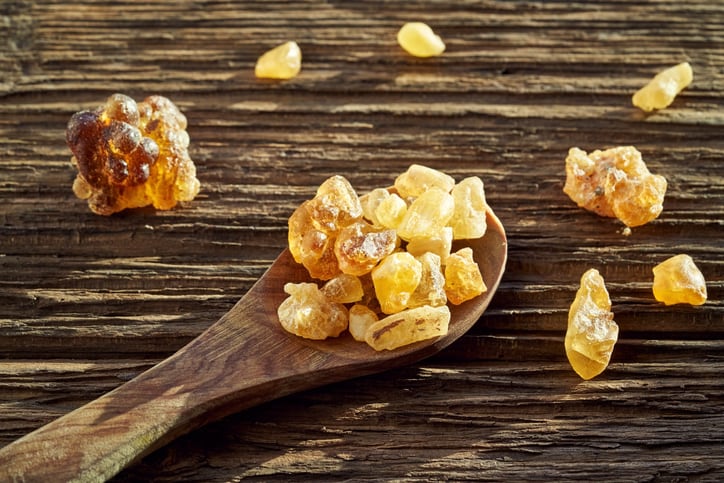Boswellia serrata, or Indian frankincense, has become a popular botanical in recent decades. Interestingly, after a steep rise in popularity in the mid-2010s, especially in the mass channel, sales of the ingredient have dropped off. After 2019, according to the American Botanical Council, Boswellia dietary supplements have dropped out of the top-selling 40 botanical ingredients. In 2021, combined mass market/natural channel retail sales were $8.94 million in the United States.
BAPP (Botanical Adulterants Prevention Program) is a joint venture between ABC, the American Herbal Pharmacopoeia and the National Center for Natural Products Research. The latest laboratory guidance document marks the 74th peer-reviewed publication under the program.
Sorting out constituents from closely related species
Roy Upton, AHP president and an herbalist with decades of experience, said Boswellia, like some other botanicals, had a rich and variegated history. Trade in this class of ingredients goes back thousands of years, and closely related species were used more or less interchangeably. It’s only with modern market standardization that questions of how much of each species were in a mixture started to assume critical importance.
“Because of their morphological and chemical similarities, and similar medicinal uses, a host of oleogum resins were historically traded interchangeably and often without botanical specificity,” Upton said. “In more recent decades, Boswellia serrata has emerged as the preferred source of Boswellia, at least from a nomenclatural perspective.”
Boswellia is sourced from the gum resin taken from a tree native to the Indian Subcontinent and eastern Africa. Historically, oleogum resins from other Boswellia species, in particular B. frereana, B. papyrifera, and B. sacra appeared in trade. These materials may be used as legitimate substitutes in cases where there are locally accepted interchangeable uses. Sometimes they can be used as adulterants, if their inclusion is not transparently disclosed on certificates of analysis or on ingredient labels, possibly due to local supply shortages or misidentification of B. serrata along the supply chain.
Lab guidance details 46 different methods
The lab document, which underwent a peer review from a panel of 24 quality experts, lays out 46 analytical methods with respect to their suitability to authenticate Boswellia serrata oleogum resin and its extracts. Of note, the LGD features images of a side-by-side HPTLC (high-performance thin-layer chromatography) fingerprint comparison of B. serrata and seven other Boswellia species, as well as myrrh (Commiphora myrrha). These HPTLC images were developed specifically for BAPP for the boswellia LGD.
“Two issues make the authentication of Boswellia serrata extracts particularly challenging. Some of the published data on the contents of the purported anti-inflammatory constituents, the boswellic acids, in Boswellia species appear to be based on erroneous species identification. Therefore, the exact composition of the confounding species can be difficult to determine,” said Stefan Gafner, PhD, BAPP technical director and ABC chief science officer.
“Additionally, some of the commercial extracts are processed in a way that alters the relative amounts of the naturally occurring boswellic acids, leading to a proprietary ingredient that has a very different composition than what is found in the oleogum resin,” he added.
Better specifications
Upton said the lab guidance document could help improve the sector by allowing manufacturers to set more precise specifications.
“This document is perhaps the most detailed review of the differences of these resins conducted in the English language and should give any manufacturer using a boswellia ingredient clarity of what it has, as well as perhaps expand specifications to allow for the interchangeable use of those species that are most similar,” Upton said.




